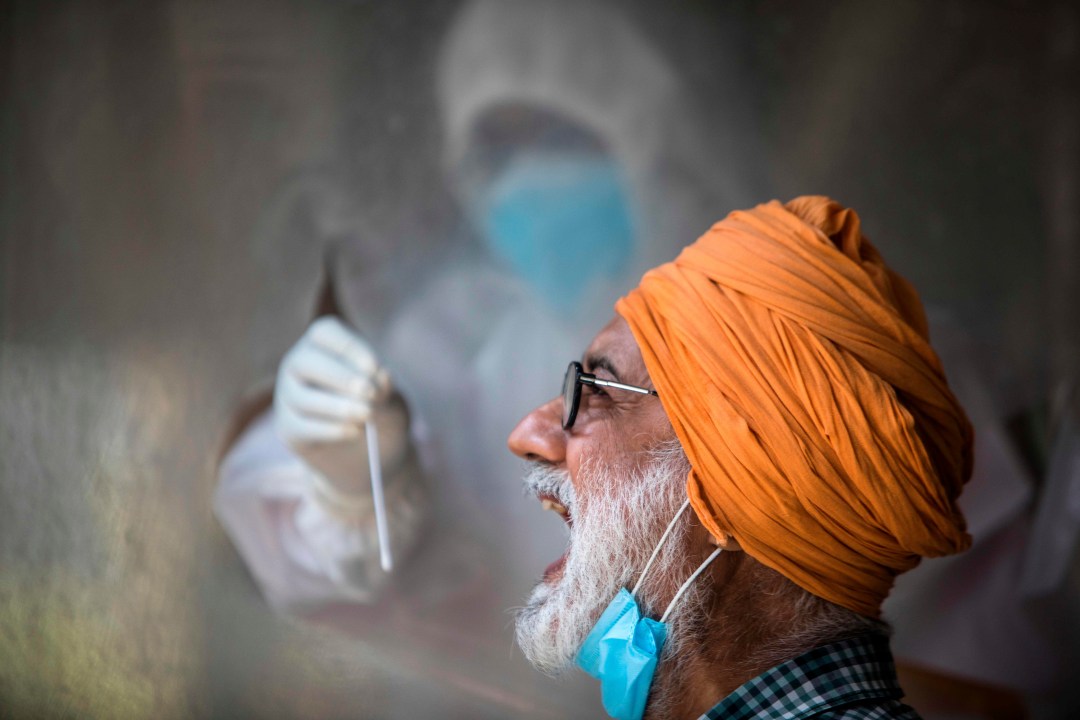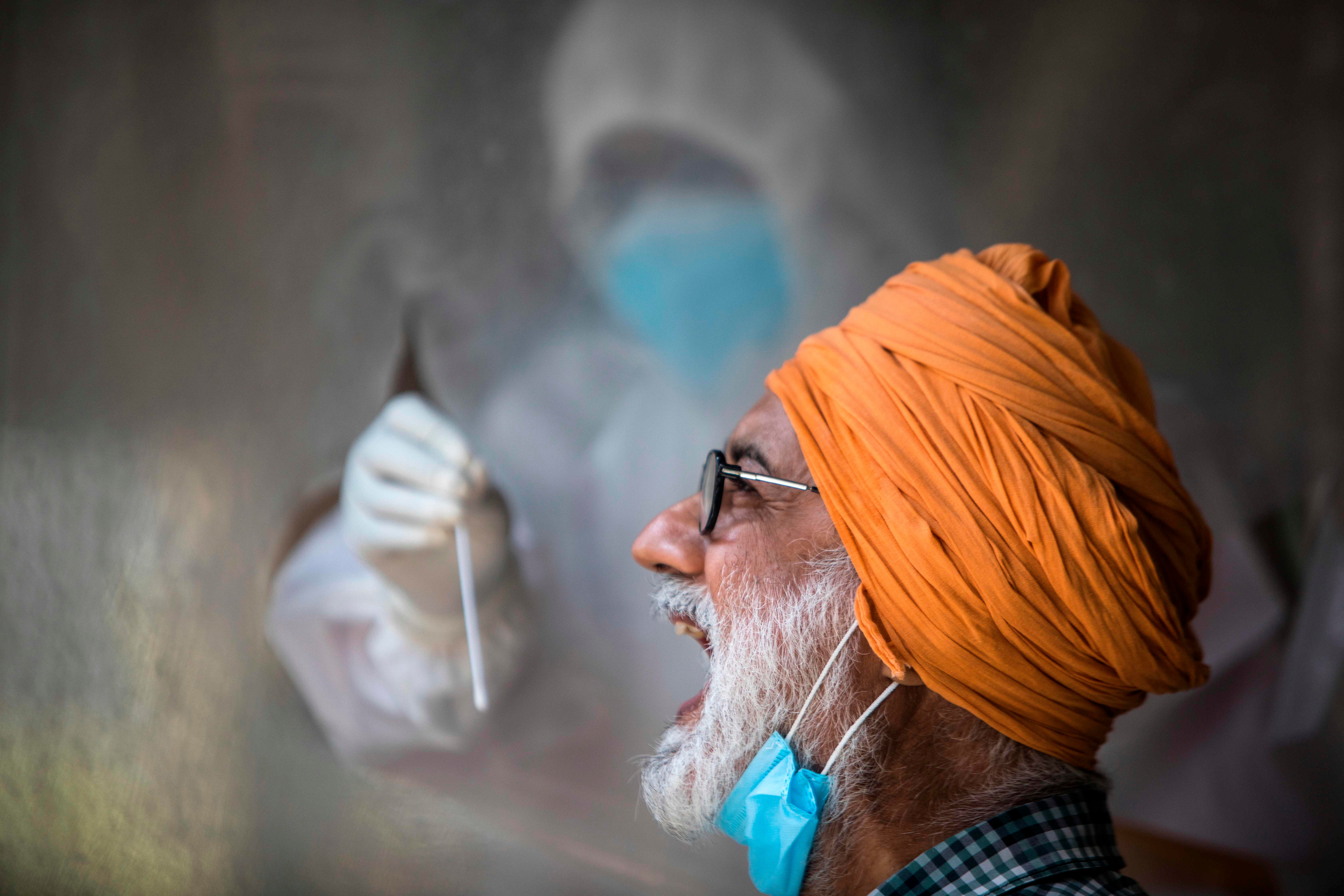The Prime Minister has cancelled his trip to India, due to happen next week, though travellers coming from the country are yet to be told to quarantine for two weeks. But the fact India is yet to be put on the red list has caused some surprise given the surge in cases of Covid-19 — up from 12,000 a day in early February to 270,000 on Sunday, many of which will be the new Indian variant. The whole reason for the red list was to guard against new variants gaining a foothold here. Is India heading for the red list shortly — possibly even later today — or on what grounds might it escape?
The worry with the Indian variant is that it contains two mutations associated with a higher level of transmissibility
There are certainly some scientists who are of the view that the Indian variant — otherwise known as B1617 — is at least as dangerous as the South African and Brazilian variants, both countries that have been on the red list since its inception earlier this year. Cristina Pagel, Professor of Operational Research at UCL, tweeted at the weekend that the prevalence of B1617 in Maharashtra state has increased from 20 per cent to 60 per cent over the past few weeks and that the proportion of cases in Britain accounted for by B1617 has increased from 0.2 percent to 1 per cent: a similar growth rate to the Kent variant late last year.
The worry with the Indian variant is that it contains two mutations associated with a higher level of transmissibility — E484Q, which has been blamed for greater transmissibility in the South African and Brazilian variants, and also L452R, which is feared may have some ability to bypass the body’s T cell response. So could this new variant escape vaccines? We don’t yet have a study on its ability to sidestep any of them. What we do know is that India is a lot less vaccinated than Britain — 29.6 per cent of the over-45s have so far received at least a first jab — and that India to date has used two vaccines: Covishield, which is a locally-produced AstraZeneca vaccine under a global branding, and Covaxin, India’s home-developed vaccine which has shown good efficacy in trials.
As yet B1617 is only listed in Britain as a ‘variant under investigation’ — a status it has had since 1 April — rather than a ‘variant of concern’. It is the latter that would trigger India’s addition to the red list. But there is also politics involved. Boris Johnson’s trip to India was not an idle act of courtesy but part of efforts to cut what would be Britain’s first stand-alone trade deal — one that was not at least partly inherited from the EU. That would be a huge coup — and one which would vindicate the Prime Minister’s argument that an independent Britain would be more effective at doing trade deals on its own than as part of a 27 member bloc. Johnson was also hoping to unlock some of the millions of doses of the AstraZeneca vaccine that are meant for UK shores.
The desire to push ahead with trade, however, is likely to end up coming second to the government’s battle against Covid variants. Sage advisers are not going to be focusing on trade deals, and the Prime Minister has shown many times that he tends to bend to their advice — so expect India to go onto that red list sooner rather than later.








Comments